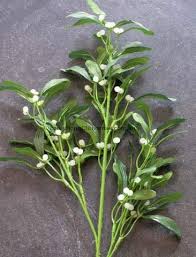 Summer is here, according to the calendar at least... It does not feel much like it with all the "occasional" rains, the cool nights and the resulting dampness. Who would have thought we would still have the heat on even if "occasionally"! Let's count our blessings though as we have no tornadoes, hurricanes or wild land fires...so far!
Summer is here, according to the calendar at least... It does not feel much like it with all the "occasional" rains, the cool nights and the resulting dampness. Who would have thought we would still have the heat on even if "occasionally"! Let's count our blessings though as we have no tornadoes, hurricanes or wild land fires...so far!We have now many fawns on the island and it is a pleasure to see doe and fawns wandering across the lawn!
And as we are counting our blessings (and not the shadows) we celebrate our son in law's birthday this week. Since his only request was for Chocolate mousse, I pulled out our all time favourite recipe to indulge him!
Before we will have a chance to go back to the cabin I think we will miss the bluebells. How sad! I love to see them even if they do not grow as prolific as in the UK! There you might see all carpets of them whilst we have only a few here and there!

Mistletoe also grows everywhere in our mountain hideaway. I think of it as a blessing for our land yet I hear it is considered a nuisance and should be removed from the trees...Sigh...
 But what I like best about mistletoe is the Christmas memories it brings to mind! And since I was thinking about Christmas, I thought to look a bit more to discover what is behind the mistletoe tradition:
But what I like best about mistletoe is the Christmas memories it brings to mind! And since I was thinking about Christmas, I thought to look a bit more to discover what is behind the mistletoe tradition:"The history and origin of the Christmas mistletoe can be traced back to the ancient Scandinavian custom as well as to the Norse myth. The Scandinavian people believed mistletoe to be a plant of peace. Even if enemies happened to pass beneath the plant, they had to lay down their arms and call truce atleast until the next day. Slowly and gradually, this custom gave rise to the kissing tradition that is still in vogue. However, Christmas mistletoe is also very much associated with one of the Norse myths, known as the myth of Baldur.
Baldur, the God of vegetation, was the son of Norse goddess, Frigga. When he was born, Frigga made each and every plant, animal and even inanimate object promise that it will never ever harm Baldur. Somehow, the mistletoe plant escaped the attention of Frigga and Loki, the enemy of Baldur, took advantage of this lapse. He tricked one of the other Gods into killing Baldur with a spear made of mistletoe.
With the death of Baldur, winters came into this world. To correct this situation, the Gods restored Baldur to life. After this incident, Frigga pronounced the mistletoe to be a sacred plant, which would bring love in the world, rather than death. From then onwards, whenever two people pass under mistletoe, they kiss and celebrate Baldur's resurrection. Apart from the customs and myths, the Christmas mistletoe has also been associated with kissing as it is regarded as an aphrodisiac."
"Kissing underneath a branch of mistletoe goes back hundreds of years, certainly to the early 17th century. But legends about the curious plant go back even farther, even to the time of Christ and earlier. One legend has it that the wood of the cross of Christ was made from mistletoe, and supposedly for that reason the mistletoe plant has been doomed to live as a parasite, and is so classified today, making it condemned to live on the goodwill of other trees. Shakespeare in Titus Andronicus called it “the baleful mistletoe,” no doubt referring to the fact that in large quantities the waxy white berries are toxic. On the other hand, ancient Druids thought the plant had healing, even magical, powers.
Because of the Druids’ use of mistletoe, Christians banned its use in their churches in England
and because mistletoe grows primarily on apple, lime, poplar and hawthorn trees in the Midlands and around York, it was a local favorite there long after the Druids were in decline. So in the famous minster at York, its use during the holiday season has always been retained.
In the York cathedral the minister placed the branch on the High Altar and proclaimed “public and universal liberty, pardon and freedom of all sorts of inferior and wicked people at the minster gates, and the gates of the city, towards the four quarters of heaven.” "
Christmas...dreams, dreams....

No comments:
Post a Comment
I love to share dreams and always enjoy meeting kindred spirits!
Thank you for stopping by!